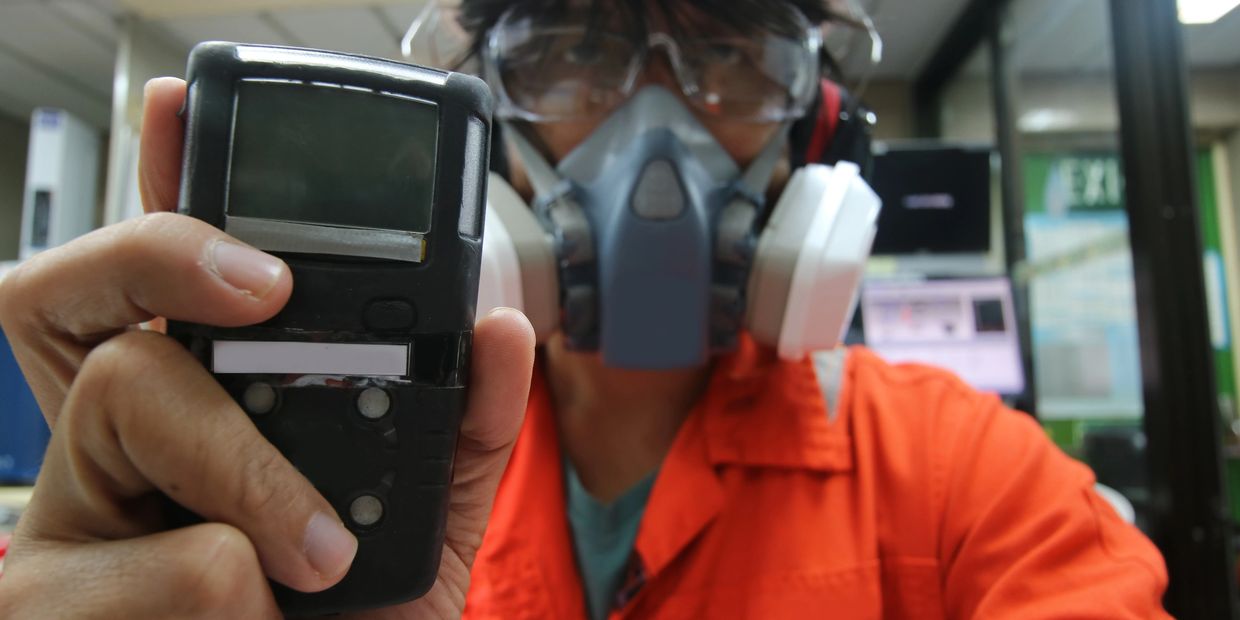Industrial Hygiene

Identifying hazards is one thing, but quantifying them is an entirely different. Hazards must be measured to help determine the severity. Find our most common type of sampling below:
Benzene: Benzene is found in a variety of industries and occupations. Examples include: benzene productions relative to petroleum and coal, tire manufacturing, petroleum storage and transport, steelworkers, printers, rubber workers, show makers, laboratory technicians, firefighters, and gas station employees. Occupational exposure to benzene can cause cancer. Standard testing methods focus on gathering three shift samples. We can help test your work environment using gas monitors, colorimetric detection tubes, and GCMS Canisters. We strongly recommend collecting personal and area samples for each operational area.
Hexavalent Chromium: Hexavalent Chromium is another common hazard produced during “hot work,” such as welding on stainless steel and other alloy steels containing chromium metal. Occupational exposure targets the respiratory system, kidneys, liver, and skin if the proper safeguards are not implemented to ensure employee safety. Standard testing methods focus on gathering three shift samples. We can help test your work environment by placing a portable sampler on the welder that collects a “breathing zone” sample of the welding emissions. Specifics Hexavalent chromium sampling media is used for collection. We strongly recommend collecting personal and area samples for each operational area.
H2S (Hydrogen Sulfide): H2S is found in various industries and occupations and is highly flammable and extremely toxic. H2S occurs naturally in sewers, manure pits, well water, oil and gas wells, and volcanoes. Exposure can range from mild headaches or eye irritation to unconsciousness or even death. Standard testing methods focus on gathering three-shift or “grab” samples. We can help test your work environment using gas monitors, colorimetric detection tubes, and GCMS Canisters. We strongly recommend collecting personal and area samples for each operational area.
Noise: OSHA information reports that twenty-two million workers are exposed to potentially damaging noise at work each year. Once the nerves are damaged in the inner ear, permanent hearing loss occurs and cannot be corrected by surgery or medicine. Standard testing methods focus on gathering three shift samples. We can help test your work environment using noise dosimeters. We strongly recommend collecting personal and area samples for each operational area.
Welding Fumes: Welding fumes are generated in various occupational operations by joining or cutting pieces of metal by heat, pressure, or both. Occupational exposure to welding fumes can lead to multiple health problems, including possible carcinogen exposure if the proper safeguards are not implemented to ensure employee safety. Standard testing methods focus on gathering three shift samples. We can help test your work environment by placing a portable sampler on the welder that collects a “breathing zone” sample of the welding emissions. Air pumps and welding media filters are used for collection. We strongly recommend collecting personal and area samples for each operational area.
Call Vector Safety at (406) 850-5390 to get more information and/or pricing.
This website uses cookies.
We use cookies to analyze website traffic and optimize your website experience. By accepting our use of cookies, your data will be aggregated with all other user data.